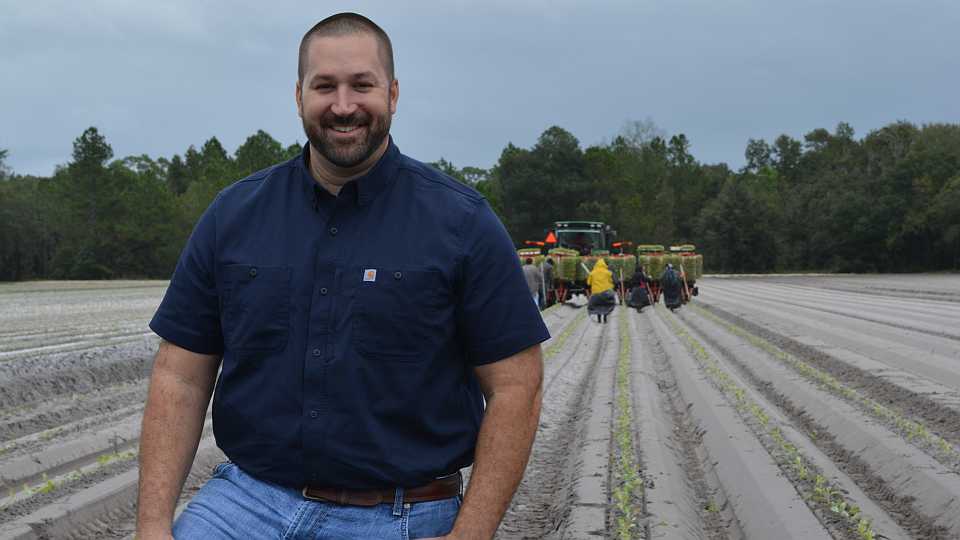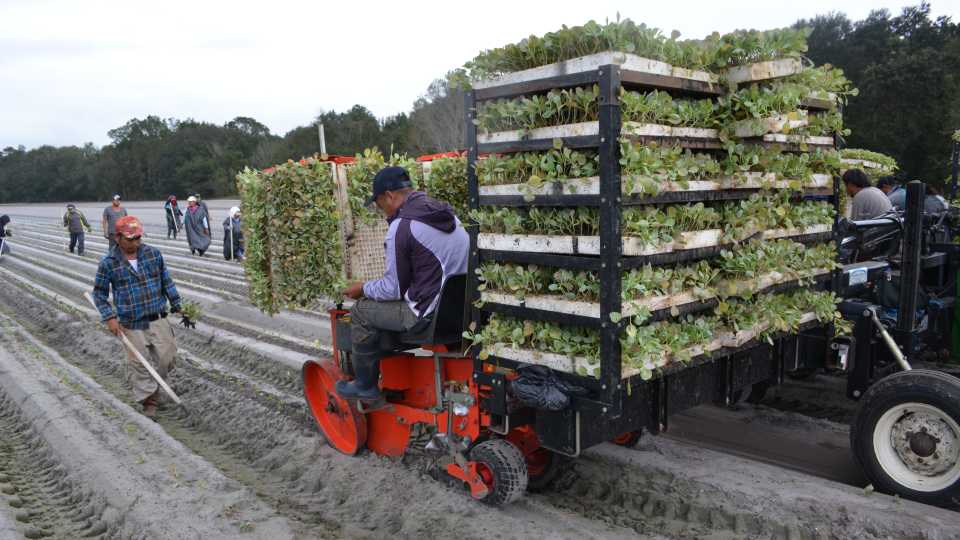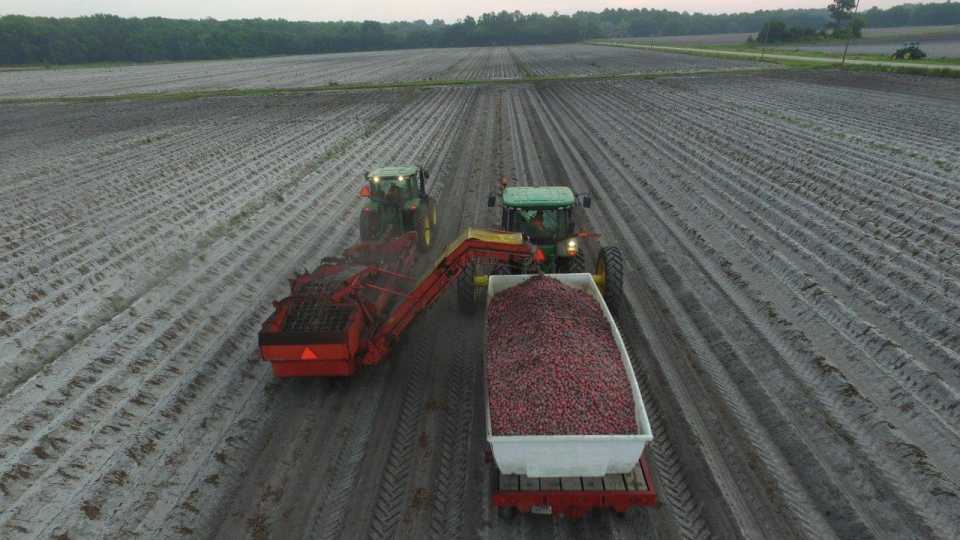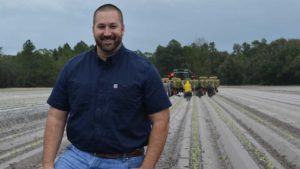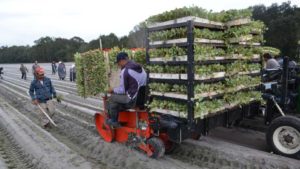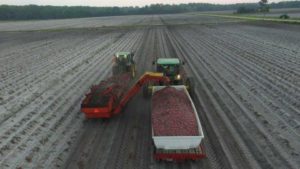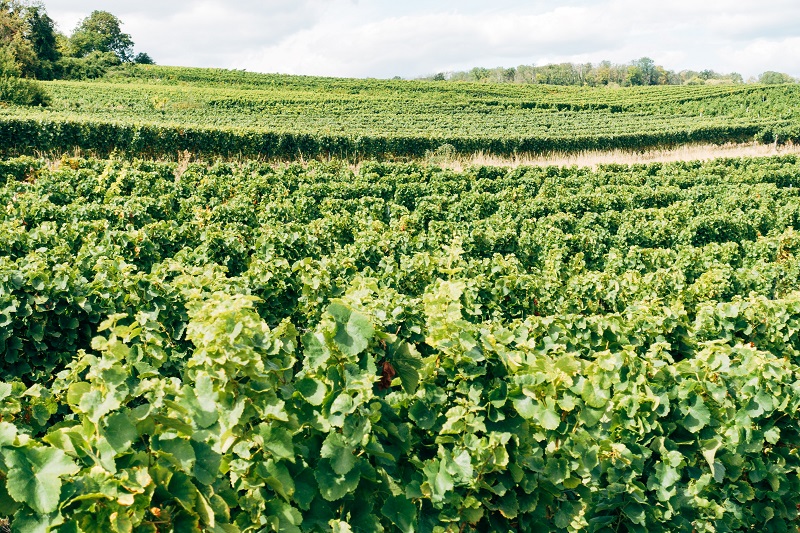How to Grow Produce with Consumer Awareness and Demand in Mind
With instant access to information and the ability to share it in the digital age, consumers are exploring more options in fresh fruits and vegetables. For growers, that means a diversity of offerings is becoming even more important these days. L&M Farms in East Palatka, FL, has a long history of growing quality crops. According to Adam Lytch, Operations Manager for the farm, producing a variety of core crops for its customers also is important. Growing up on his family’s cotton and tobacco farm in North Carolina, he knew agriculture would be his career path.
“Although I was not raised on a produce farm, I became very intrigued by it while meeting members of the L&M team when I was in college,” Lytch says. “I started with L&M right out of school and have been with them ever since.”
Lytch worked in various roles at L&M as part of the company’s training program. The diversity of the farm’s product portfolio is evident in Lytch’s current job description.
“I ultimately fell into and in love with the role of working with our Southeast farms and warehouses, and today I oversee our Georgia and Florida farms and warehouses. We currently own and operate six warehouses and farm more than 7,000 acres throughout the two states,” he says.
“We grow a variety of southern vegetables including bell peppers, cucumbers, squash, eggplant, chili peppers, broccoli, sweet potatoes, cabbage, greens, watermelons, and new crop potatoes. L&M currently has farms in seven counties in Florida including operations in LaBelle, Palmetto, Branford, and East Palatka,” Lytch says.
“At our East Palatka farm where I am based, we grow broccoli, cauliflower, collards, kale, turnip, mustard, a variety of different cabbages, and new crop red, yellow, and white potatoes. We also have recently started producing a few specialty potatoes including fingerlings, purples, and mini-creamer-size potatoes in various colors.”
Adding Organics
L&M Farms has responded to the hot demand for organic produce by adding it to its portfolio four years ago. They have 120 acres of organics in the Tri-County Agricultural Area (TCAA) and 60 acres on the Branford farm. L&M is growing broccoli, kale, cabbage, bell peppers, and zucchini squash organically.
“One of the biggest reasons we have added organics is to help provide more of a one-stop shop for our customers,” Lytch says. “Nearly all of our customers are buying some organics of core items we grow. So we saw the need to begin producing them to meet that need,” he says.
“The market and demand have been really good on some items and slower on others. Organic broccoli, for instance, has been in high demand and seems to have a rather large market share in some retail outlets.”
Lytch says growers considering adding organic crops to their farm should work closely with the certifying companies that verify USDA organic guidelines. He says they are very helpful to be sure all farming practices are in compliance before the auditing process begins.
“We have certainly learned a lot about organic production in the past couple of years,” he says. “The very first thing we learned is that it is not easy. Growing conventional is challenging enough, but organic cranks the difficulty up a few notches.
“There are less tools to use in organic production, which is why there is a yield penalty on most of the products we produce. Coupled with increased cost of inputs makes for an item that has to bring in more money.”
Focused on Water Quality
With this year’s red tide, water quality has been in the spotlight in the media and in the midterm elections. In the TCAA with many of the farms close to the St. Johns River, water quality has been a top priority for years.
“There has been a lot a scrutiny on water now, and that has been building for the last several years,” Lytch says. “It’s going to continue. We have known it was on the horizon, especially as the population in Florida continues to grow, so will the demand for good quality drinking water.”
Lytch says L&M Farms has taken a proactive approach to the water issue by working with the various water management districts in the areas of the state where they farm.
“In the TCAA, we have worked with St. Johns River Water Management District on a cost-share basis to convert some our traditional seepage farmland over to the irri-drain tile system,” Lytch says. “Through this system, we irrigate and drain a field using the same pipe, allowing us to manage our soil profile to optimize root development and crop yield while minimizing the amount of water we use.”
Lytch says the tile system has reduced water usage by 50%. By taking seepage furrows out of fields, the farm benefits by being able to use all of the land. L&M has converted about one-third of its owned acreage to irri-drain.
“We will continue to look at irri-drain and other new technologies as they emerge. That helps our farm be a part of the solution to our water challenges.”
Matt Palmer, with Florida-based Soil & Water Agricultural Technologies, installed the irri-drain tile on the farm. He says beyond water savings, the system allows growers to reduce their fertilizer inputs.
“Research conducted by Mark Clark, an Associate Professor of wetland ecology with UF/IFAS, has shown nitrogen and phosphate can be cut by 30% using irri-drain.”
While the system has irrigation and fertilizer-reduction benefits, Lytch says the system’s ability to move water off fields after rain events is equally important. According to Palmer, the tile can remove 10 to 14 inches of water off a field in a 24-hour period.
In the TCAA, growers can obtain cost-share funds of up to 75% for materials with a cap of $250,000. There are cost-share opportunities in other water management districts as well.
Proactively Engaged
L&M Farms has placed a priority on marketing its brands and reaching out to consumers in recent years.
“We know that it is more important than ever to interact with the consumers buying our products either via retail or food service and by engaging them with social media, through our website, through the press, at point of sale, or however else we may reach them,” Lytch says.
“More and more people want to understand where the food they are feeding their families is coming from, and that is why it is important we continue to tell our story. We want them to know not only of our strong food safety practices and sustainability measures, but also about the flavor profiles of our proprietary varieties and recipes we share for the items we grow.”
Lytch applies L&M’s corporate engagement philosophy on a personal level. He is currently serving on the board of FFVA and on the grower-shipper board of United Fresh.
“I am a proud graduate of the United Fresh Leadership Program, Class 22,” Lytch says. “Through the United Fresh program, I learned a lot about the produce industry by visiting various operations all over the country and participating in leadership workshops. The most important thing I gained from the program was an incredible peer group that were my classmates. I consider them close friends, and I continue to bounce ideas off them on a regular basis.”
More About L&M Farms
L&M was founded in 1964 by Joe McGee in Raleigh, NC. McGee founded L&M Farms in 1983 in East Palatka, FL to formalize a relationship between himself and Larry Corn, who is Farm Manager at the East Palatka operation to this day. Larry and his son, Brett, farm for L&M on some of the same ground cleared by Larry’s father Charlie Corn in the early 1950s.
“Mr. McGee is still very much involved in the farming side of our business, and there is no place he would rather be than walking cabbage rows or standing on the potato grader,” says Lytch. “I personally consider Mr. McGee an incredible mentor as he has been to so many people over the years in this business.”





